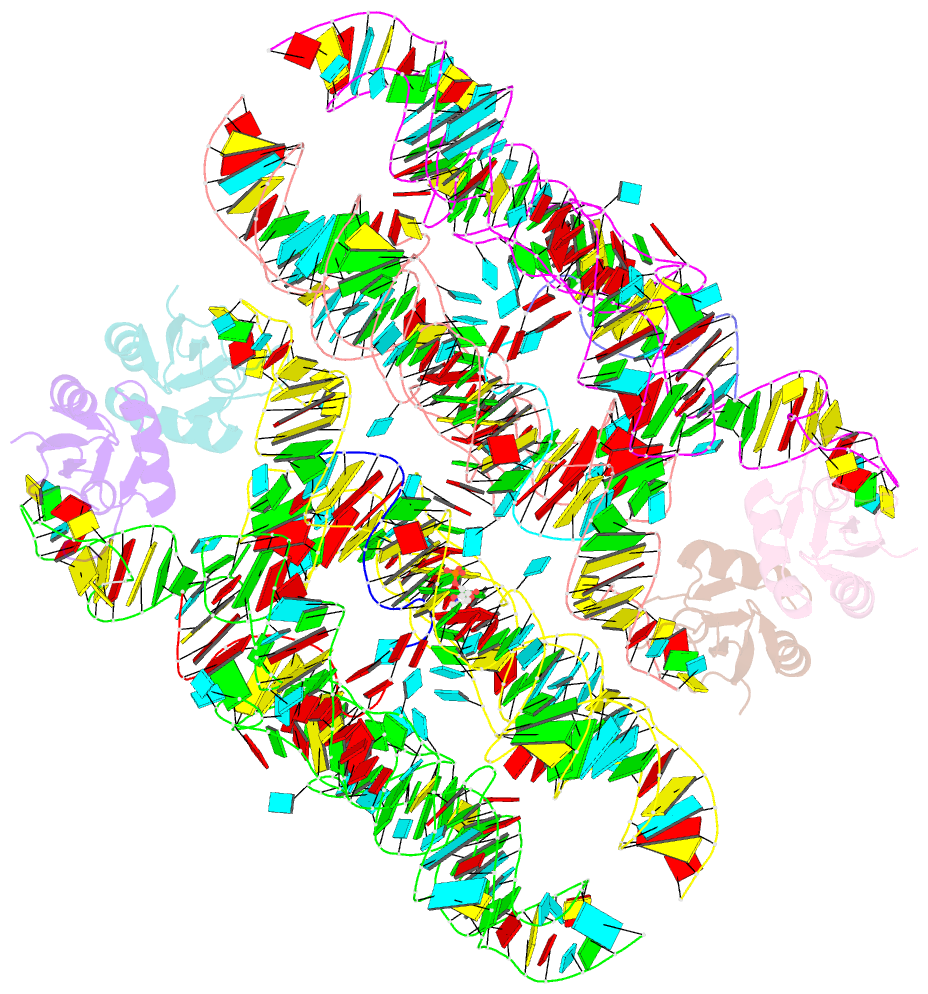Summary information and primary citation
- PDB-id
- 3g96; SNAP-derived features in text and JSON formats;
DNAproDB
- Class
- RNA binding protein-RNA
- Method
- X-ray (3.01 Å)
- Summary
- Crystal structure of the bacillus anthracis glms ribozyme bound to man6p
- Reference
- Cochrane JC, Lipchock SV, Smith KD, Strobel SA (2009): "Structural and chemical basis for glucosamine 6-phosphate binding and activation of the glmS ribozyme." Biochemistry, 48, 3239-3246. doi: 10.1021/bi802069p.
- Abstract
- The glmS ribozyme is the first naturally occurring catalytic RNA that relies on an exogenous, nonnucleotide cofactor for reactivity. From a biochemical perspective, the glmS ribozyme derived from Bacillus anthracis is the best characterized. However, much of the structural work to date has been done on a variant glmS ribozyme, derived from Thermoanaerobacter tengcongensis. Here we present structures of the B. anthracis glmS ribozyme in states before the activating sugar, glucosamine 6-phosphate (GlcN6P), has bound and after the reaction has occurred. These structures show an active site preorganized to bind GlcN6P that retains some affinity for the sugar even after cleavage of the RNA backbone. A structure of an inactive glmS ribozyme with a mutation distal from the ligand-binding pocket highlights a nucleotide critical to the reaction that does not affect GlcN6P binding. Structures of the glmS ribozyme bound to a naturally occurring inhibitor, glucose 6-phosphate (Glc6P), and a nonnatural activating sugar, mannosamine 6-phosphate (MaN6P), reveal a binding mode similar to that of GlcN6P. Kinetic analyses show a pH dependence of ligand binding that is consistent with titration of the cofactor's phosphate group and support a model in which the major determinant of activity is the sugar amine independent of its stereochemical presentation.





